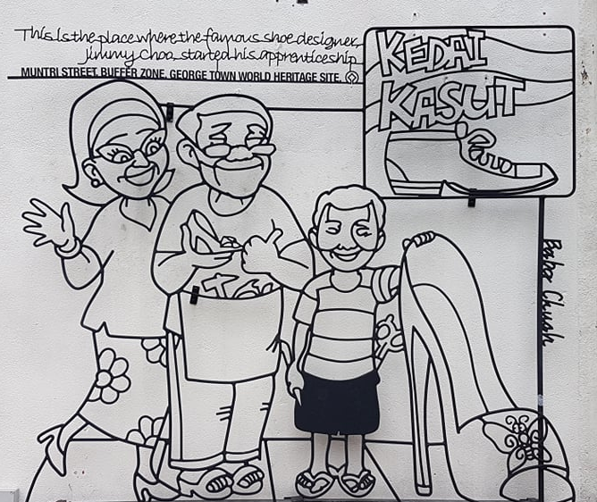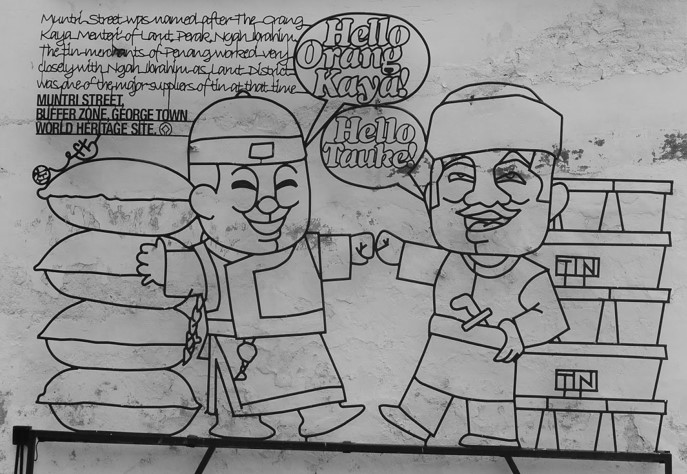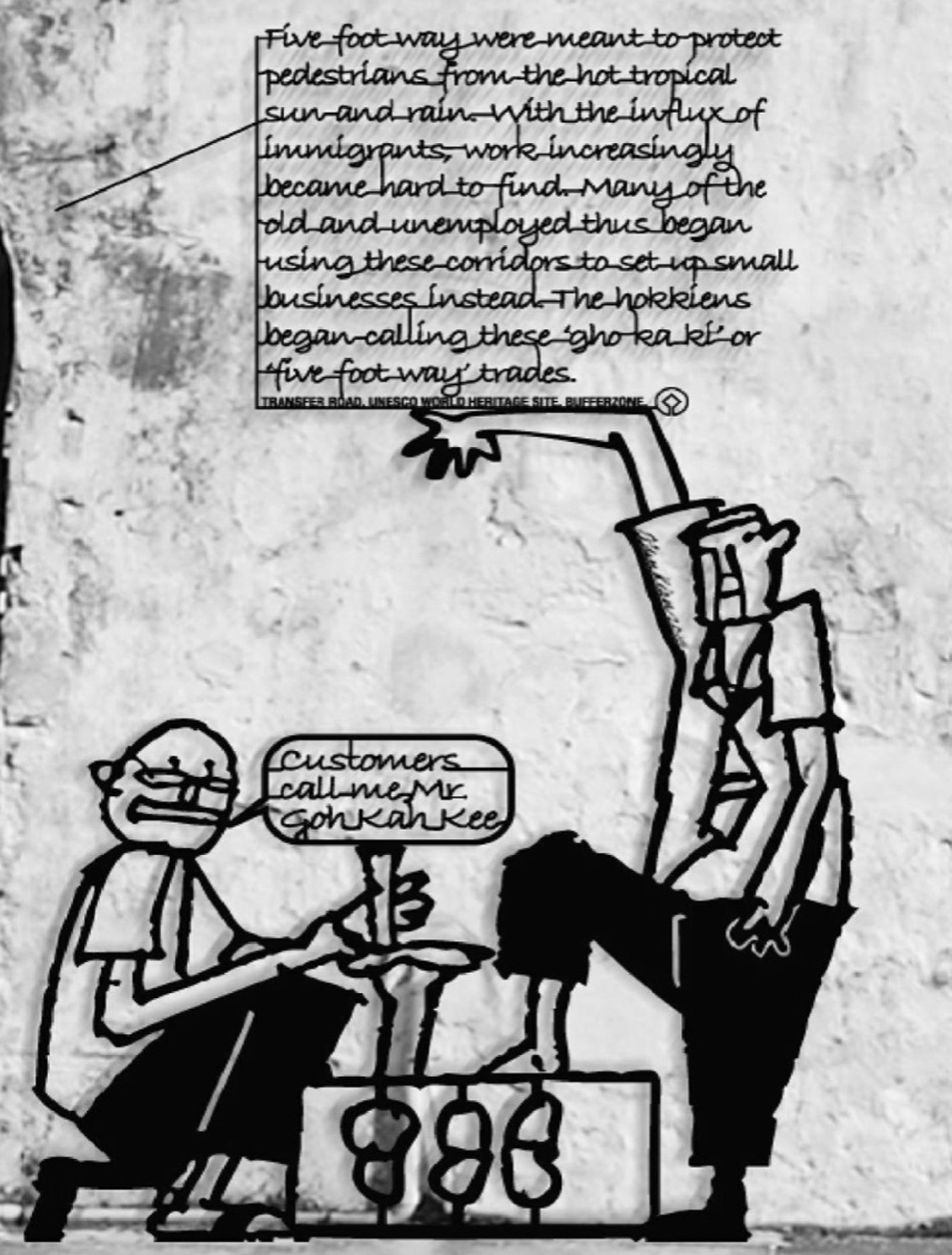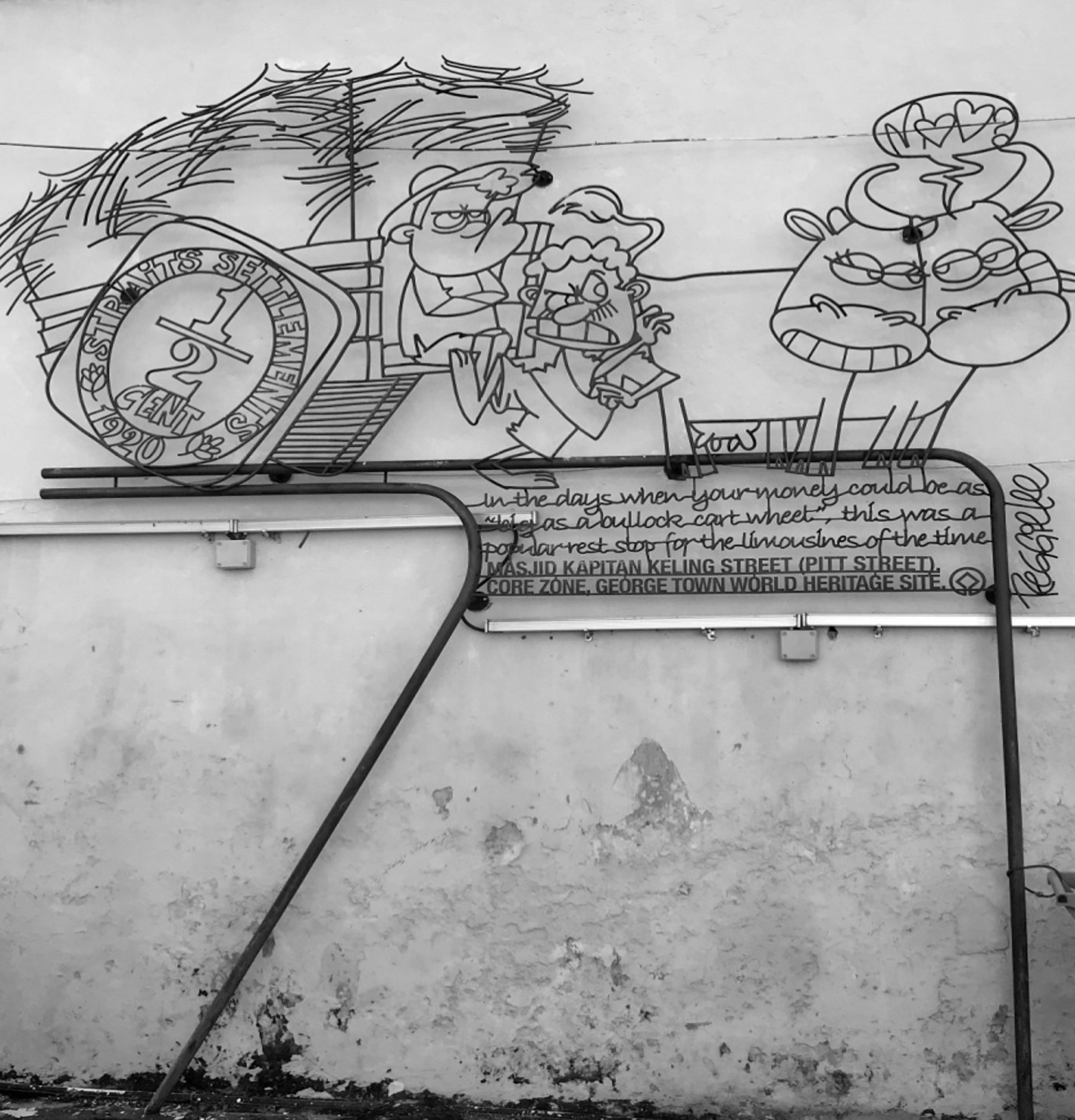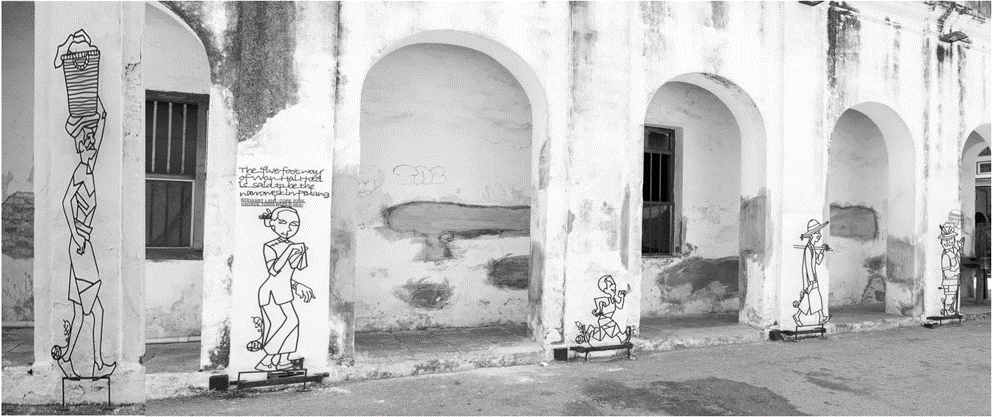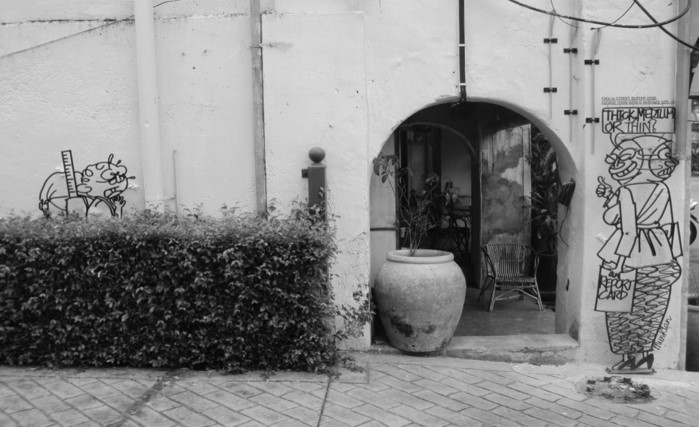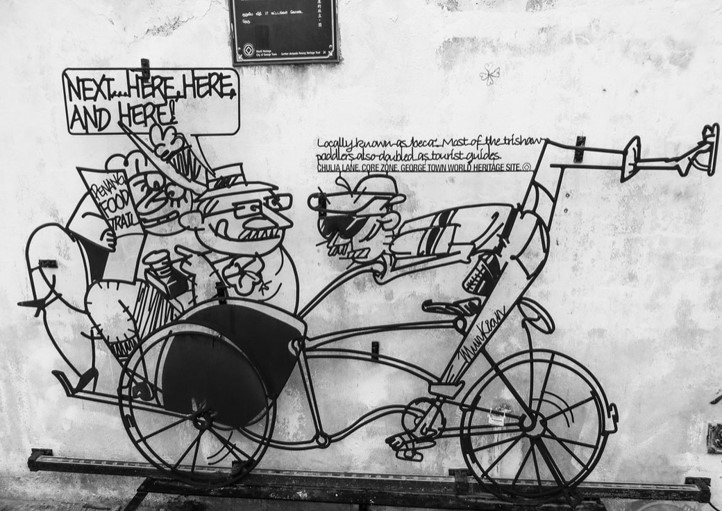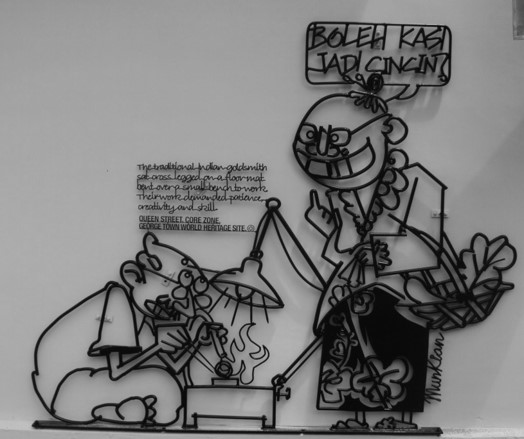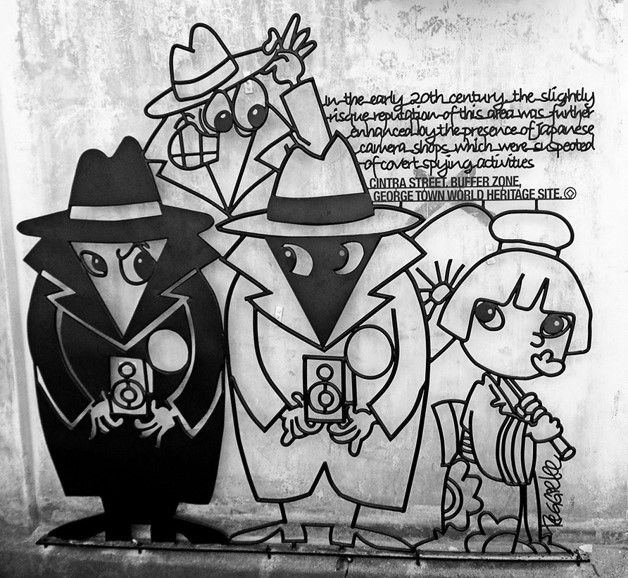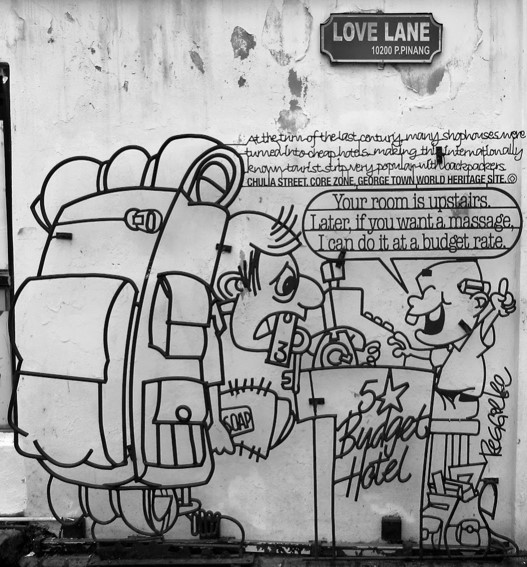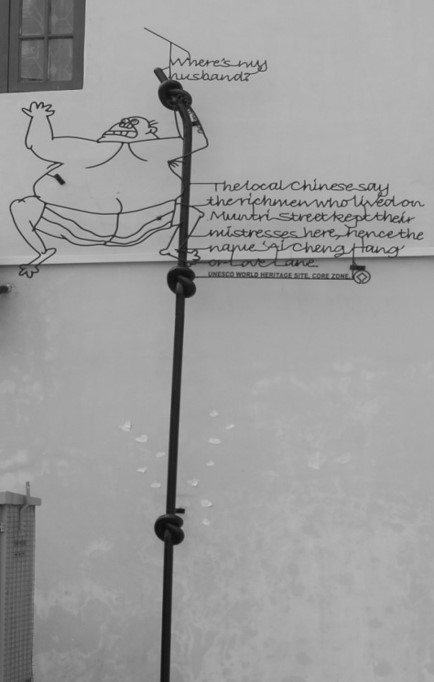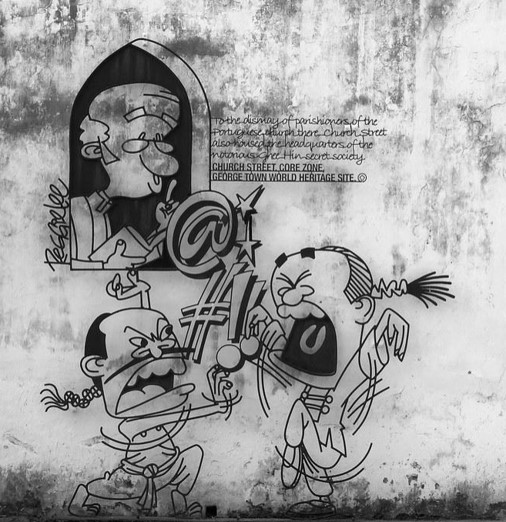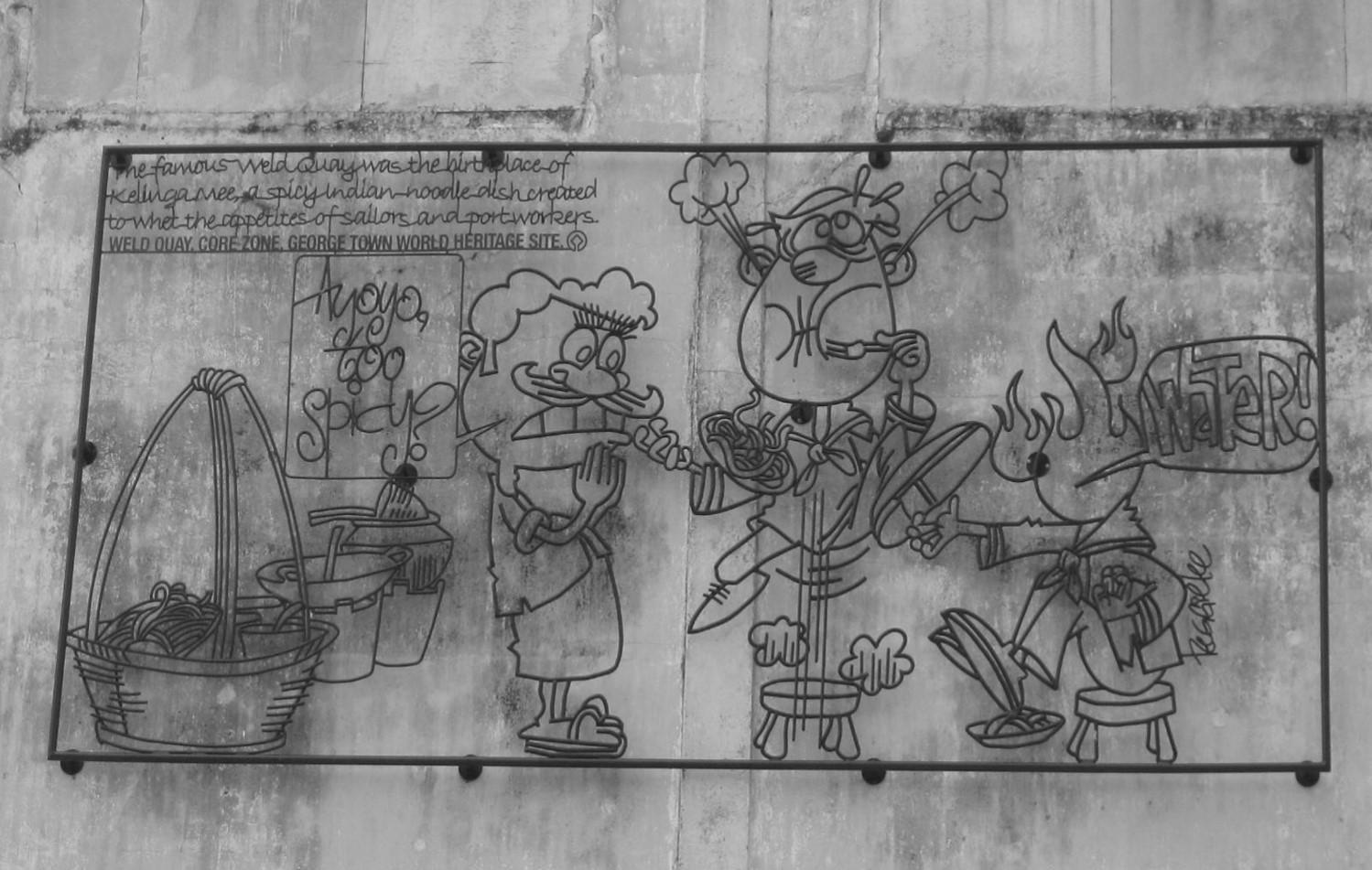Arca
Halaman 1 dari 4
-
SCULPTURE 1 : TOO SALTY
ADDRESS : NO. 32, LEBUH LIGHT
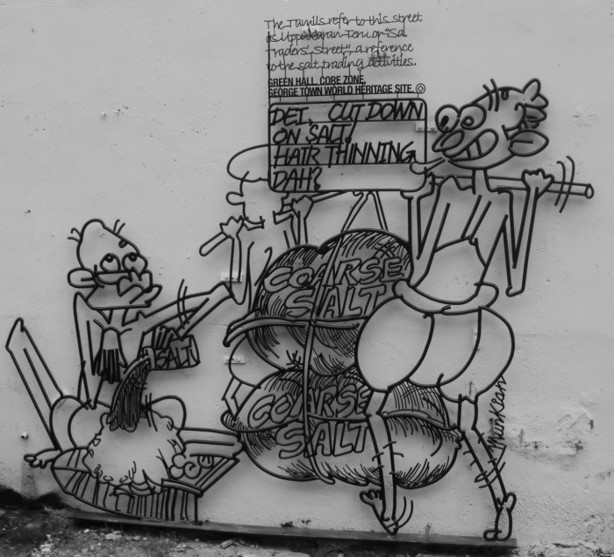
In `Too salty’, two Tamil labourers attribute their lack of hair to ingesting too much salt. Formerly, salt was important both for preserving food as well as a condiment. Sacks of salt were unloaded on jetty at the end of Jalan Green Hall then stored in its godowns.
The Tamil name for this area was Uppuvearan Teni or “Salt Traders’ Street”, a reference to the salt trading activities carried out here at this area.
-
SCULPTURE 2 : JIMMY CHOO
ADDRESS : NO. 104 LEBUH MUNTRI
-
SCULPTURE 3 : WIN-WIN SITUATION
ADDRESS : NO. 165 LEBUH MUNTRI
-
SCULPTURE 4 : MR. FIVE FOOT WAY
ADDRESS : NO. 109 JALAN HUTTON
-
SCULPTURE 5 : ONE LEG KICKS ALL
SCULPTURE 5 : ONE LEG KICKS ALL
ADDRESS : NO. 52, LORONG LOVE
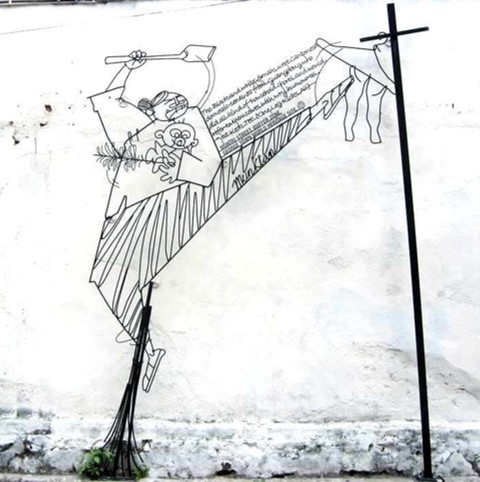
An occupation that draws uni riots between rival secret societies. One of the most intriguing aspects of these riots is that both sides were multiracial, with the Muslim Red Flag association and the Hokkien Toa Peh Kong Society united against the Muslim White Flag and the Cantonese Ghee Hin.
The most serious riots broke out in August 1867 at Lebuh Cannon area. In order to put down this unrest, the alarmed colonial authorities called in reinforcements from Singapore, and cannons were fired near the site of this sculpture, leading to today`s names of Lebuh Cannon and Medan Cannon. It is said bullet holes from this time can still be found in the walls of surrounding buildings.
-
SCULPTURE 6 : BULLOCK CART WHEEL
ADDRESS : NO.101 LEBUH BISHOP
-
SCULPTURE 7 : NARROWEST FIVE FOOT WAY
ADDRESS : NO. 35 LORONG LOVE
-
SCULPTURE 8 : ROTAN
ADDRESS : NO. 37OE LEBUH CHULIA
URL: SCULPTURE 8 ROTAN
-
SCULPTURE 9 : BECA
ADDRESS : NO. 57 LORONG STEWARD
URL: SCULPTURE 9 BECA
-
SCULPTURE 10 : GOLD TEETH
ADDRESS : NO. 47 LEBUH GEREJA
-
SCULPTURE 11 : SPY
ADDRESS : NO. 34 LEBUH CINTRA
URL: SCULPTURE 11 SPY
-
SCULPTURE 12 : BUDGET HOTEL
ADDRESS : NO. 320 LEBUH CHULIA
-
SCULPTURE 13 : CHEATING HUSBAND
ADDRESS : NO. 318 LEBUH CHULIA
- SCULPTURE 14 : QUIET PLEASE
-
SCULPTURE 15 : TOO HOT
ADDRESS : GUDANG NO. 90 PENGKALAN WELD
URL: SCULPTURE 15 TOO HOT
 MS
MS  EN
EN 
